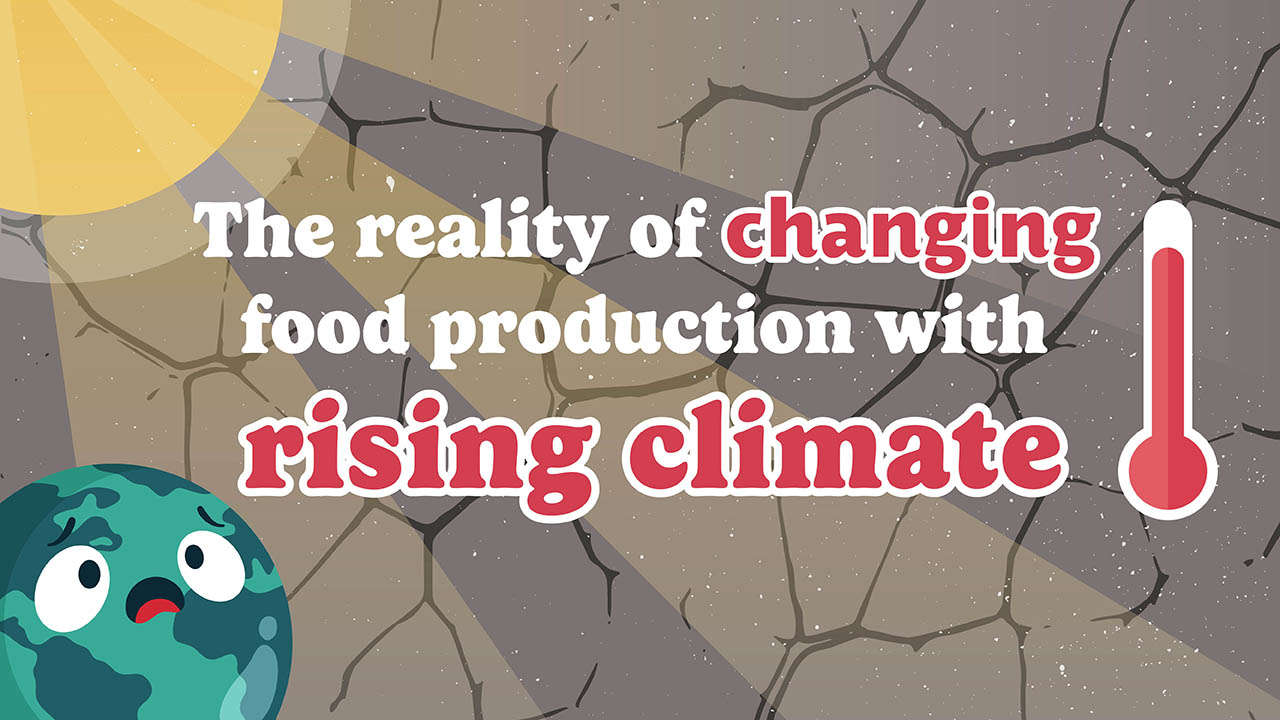The reality of changing food production with rising climate
 CREDIT: FSU PUBLICATIONS AND COMMUNICATIONS DEPARTMENT
CREDIT: FSU PUBLICATIONS AND COMMUNICATIONS DEPARTMENTAccording to NASA, in 2022, global temperatures were 0.89 degrees Celsius above the average. The past six years have been the warmest years to date in the history of modern recordkeeping.
Rising temperatures are affecting industries across the country, like agriculture, horticulture, and livestock, which all depend on moderate climate conditions to prosper. According to leading climate scientists, the wildfires that torched forests Canada-wide last summer were caused by severe droughts damaging land in many provinces.
The economies of prairie provinces, like Saskatchewan and Alberta, heavily depend on the agriculture industry as they account for over 82 per cent of Canadian farming land, according to Statistics Canada. Drought has dried up the soil, making it ineffective for farmers to use for crops.
Mary Hooydonk, a local practicing horticulturist, explained how farming methods will change to accommodate the rising dry climate and how farmers and environmental scientists will have to improve their farming techniques to be more productive and efficient under the constant change.
“Currently the effects that climate science has on crops and crop development would be environmental,” Hooydonk said. “What we’re finding is the winters are not as snowy in Canada as they used to be. Winter wheat is adjusting to less cover crop, where the snow acts as a blanket. So what we have to do as agriculturist and horticulturist, is develop plant material that can adjust to an ever-changing environment regarding snow load, high tremendous wind, tremendous amounts of water and then the opposite of that, is serious drought.”
Additionally, the overall cost of maintaining greenhouses is increasing making it hard to keep running from as it’s becoming too costly for the resources.
“When it’s 35 to 40 degrees outside, in a greenhouse 45 to 50 and that’s not sustainable for plant material. Now they have to purchase screens, then they have to purchase cooling equipment, then they have to have staff that can only work in four hours blocks of time because you cannot have staff working six to eight hours in that kind of green climate,” said Hooydonk.
Within the next 40 to 50 years, the way we see farm fields is going to change due to current methods that are being deemed unreliable for the environment. But the question now is how different things will look and will it offer similar benefits to what we see now?
“There’s going to be more wall gardening, in which the environment can be more sustained that way in a controlled way. There’s going to be walls of cucumbers, of radishes, of every kind of vegetable you could possibly think of and it’s going to become less soil dependent, where heavier crops and the more soil dependency are going to be used more for bean crop,” said Hooydonk
The everyday lives of many Canadians may have to change as well, as the way we eat depends on agriculture and the way things are made. Livestock growth and its relationship with the environment is an ongoing discussion as it accounts for 10 per cent of Canada’s greenhouse gas emissions, according to Environment Canada.
“How we’re doing it now is unsustainable,” said Hooydonk. “We can’t go on. We have to get away from heavy animal production, which is a part of agriculture, so our protein is going to come from different sources.”
In turn, scientists have been hard at work trying to figure out other efficient ways for humans to obtain protein, looking to plant and insect-based products as an alternative option.
“I think what and how we’re eating is going to look very different in the future. I think we’re going to be eating a tremendous amount of insects that are pulverized into a flower and you won’t even know you’re eating them. They’re highly sustainable,” said Hooydonk.
As the environment around us changes, humans are going to need to change, but how can we prepare ourselves for the oncoming change of times? What do we need to do now to ensure the future of humanity?
Taking the time to analyze the situation, evaluate, and educate others is how we can manage for better sustainability and overall health of the earth.

















